
Speaking of DPI, the Scimitar's zero acceleration optical sensor can be fine-tuned in 100 DPI steps all the way from 100 DPI to a lofty 12,000, which is an upgrade from the Sabre's 8,200 DPI sensor, which was also laser-based. Both axes can be adjusted separately too. The Scimitar was wonderfully responsive with no hint of lag or acceleration as far as we could tell and the near-silent rubber-coated scroll wheel provides a clean, predictable motion with an underlying button that's not likely to be depressed accidentally. The Teflon feet are fairly large and certainly big enough to prevent the mouse digging in on softer mouse mats.
Accessing the macro buttons easily is likely to come down to your hand size. The medium to average-handed out there will have an advantage as it's simple to align the pad on its slider to a mid-ground whereby all the buttons can be accessed without straining your thumb. However, this ability deteriorates the smaller your thumb is so that the first and last columns of buttons can become hard to reach.
It's a trade-off that's clear from how the buttons are arranged. They're very tactile and easy to use but they do have 2-3 millimetres in between them so the pad stretches to over 40mm end to end. However, it is something we got used to and the differing textures on the buttons themselves aided training your brain as to what was where.
Corsair's Utility Engine software still has a somewhat steep learning curve, but once you've cracked it, the customisation on offer really does set it apart from the rest. You can create enough profiles to deal with any number of games and each has its own assignments and can be manually selected or automatically activated when loading a specific game.
The front end gives you access to the button assignments, lighting controls and performance settings, where you can reassign any of the 17 buttons to your usual mouse functions, to a selections of OS-based hotkey commands, media controls, standard typing, profile switching or altering the mouse's performance.
For instance, while there's no dedicated sniper mode button, this has already been created as an action in the software, so it's just a simple task to map it to one of the available buttons - the same goes for forward and back buttons.
The integrated macro utility makes it simple to record your own plus you can pick whether to include every input, or just keyboard inputs and not mouse movement, for example. There's also a timer function, which can play a sound file on completion.
Other sections of the software allow you update the device's firmware, adjust the polling rate, disable the lighting entirely and backup or recover your profiles and settings. In short, if you need to fully customise your mouse including the lighting, you probably won't be left wanting.
Thankfully, there's a lot of automation going on behind the scenes too, so once you've spent some time creating profiles for your favourite games, you'll likely never need to visit the software again. Price-wise this is one of the more expensive MMO-orientated mice. However, the Scimitar ticks practically every box and coupled with great build quality, that premium is definitely worth paying if you're a serious gamer.
Click to enlarge
Accessing the macro buttons easily is likely to come down to your hand size. The medium to average-handed out there will have an advantage as it's simple to align the pad on its slider to a mid-ground whereby all the buttons can be accessed without straining your thumb. However, this ability deteriorates the smaller your thumb is so that the first and last columns of buttons can become hard to reach.
It's a trade-off that's clear from how the buttons are arranged. They're very tactile and easy to use but they do have 2-3 millimetres in between them so the pad stretches to over 40mm end to end. However, it is something we got used to and the differing textures on the buttons themselves aided training your brain as to what was where.
Click to enlarge
Corsair's Utility Engine software still has a somewhat steep learning curve, but once you've cracked it, the customisation on offer really does set it apart from the rest. You can create enough profiles to deal with any number of games and each has its own assignments and can be manually selected or automatically activated when loading a specific game.
The front end gives you access to the button assignments, lighting controls and performance settings, where you can reassign any of the 17 buttons to your usual mouse functions, to a selections of OS-based hotkey commands, media controls, standard typing, profile switching or altering the mouse's performance.
Click to enlarge
For instance, while there's no dedicated sniper mode button, this has already been created as an action in the software, so it's just a simple task to map it to one of the available buttons - the same goes for forward and back buttons.
Click to enlarge
Click to enlarge
The integrated macro utility makes it simple to record your own plus you can pick whether to include every input, or just keyboard inputs and not mouse movement, for example. There's also a timer function, which can play a sound file on completion.
Click to enlarge
Click to enlarge
Other sections of the software allow you update the device's firmware, adjust the polling rate, disable the lighting entirely and backup or recover your profiles and settings. In short, if you need to fully customise your mouse including the lighting, you probably won't be left wanting.
Click to enlarge
Click to enlarge
Conclusion
The Scimitar might not beat the Aorus M7 in the packaging stakes but Corsair's Utility Engine Software is absolutely made for this mouse. The combination of the two is a potent mix for any MMO/MOBA player, and it's the little things such as textured keys, lighting indicators, good ergonomics and adjustment that come together and make it a great mouse to use every day and an effective weapon in games. Due to the lack of standard thumb buttons though, some might want to consider just using it for gaming.Thankfully, there's a lot of automation going on behind the scenes too, so once you've spent some time creating profiles for your favourite games, you'll likely never need to visit the software again. Price-wise this is one of the more expensive MMO-orientated mice. However, the Scimitar ticks practically every box and coupled with great build quality, that premium is definitely worth paying if you're a serious gamer.

-
Design35 / 40
-
Features33 / 35
-
Value22 / 25


MSI MPG Velox 100R Chassis Review
October 14 2021 | 15:04


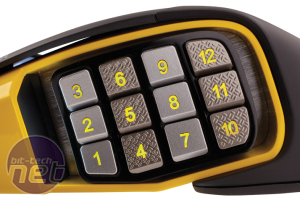

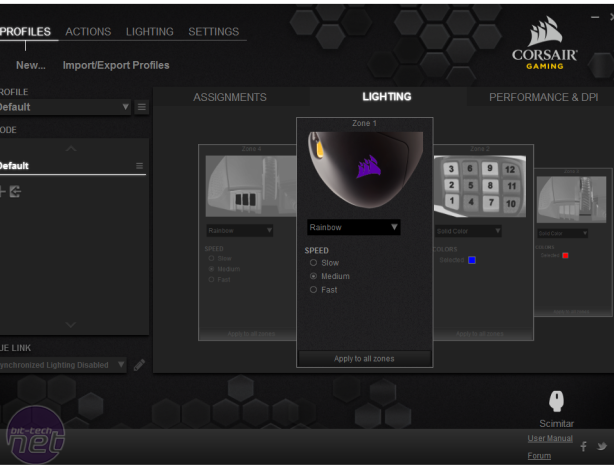

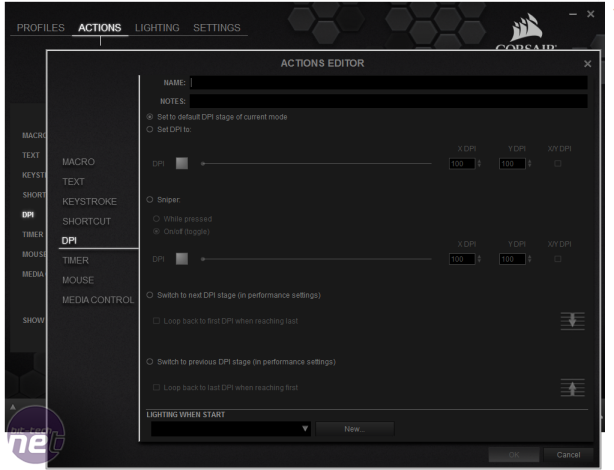
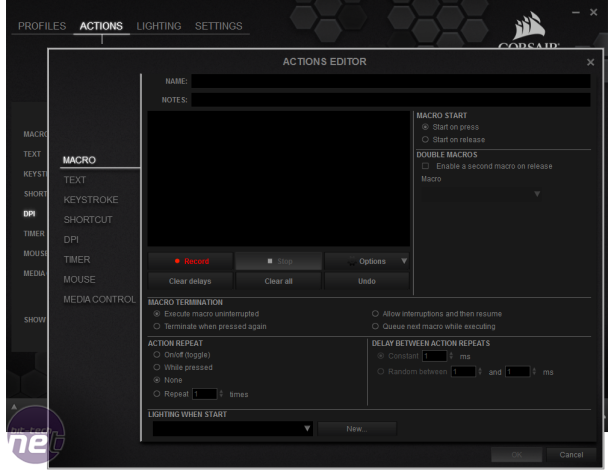
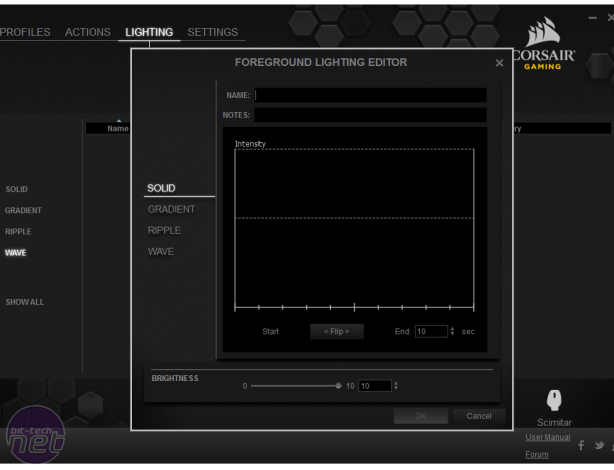
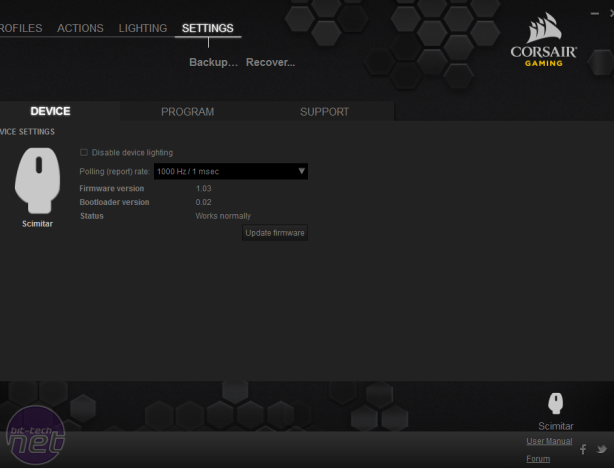
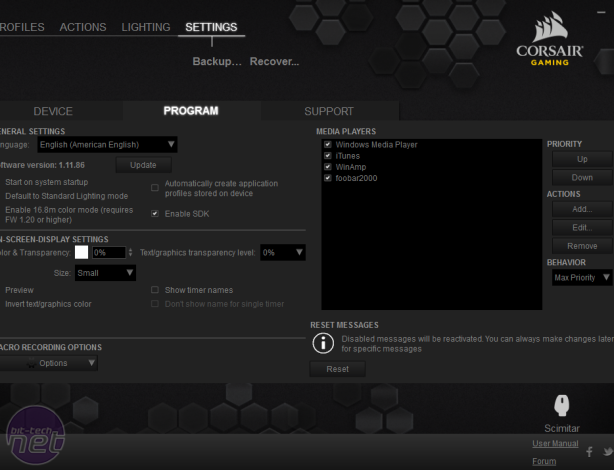
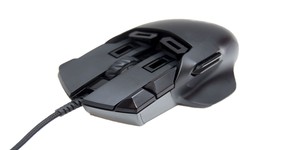






Want to comment? Please log in.